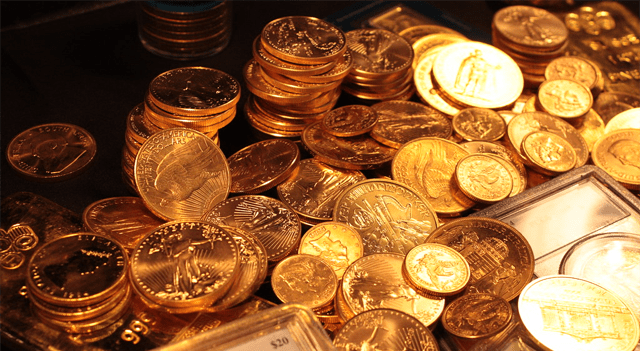Gold prices edged up in early Asian trading on Monday, though the precious metal remained under strain after two consecutive weeks of declines. Lingering uncertainty over future U.S. interest rate cuts and easing global trade tensions continued to dampen safe-haven demand.
Spot gold was up 0.4% at $4,017.13 an ounce by 01:19 ET (06:19 GMT), while U.S. gold futures gained 0.8% to $4,027.55. Despite last week’s 2% drop—the second straight weekly loss—gold still managed to post nearly 4% gains for October.
Cautious Fed Tone and Trade Relief Weigh on Gold
The Federal Reserve’s decision last week to lower rates by 25 basis points failed to lift gold, as Fed Chair Jerome Powell signaled that further cuts were “not a foregone conclusion.” His comments, echoed by other Fed officials, tempered expectations for additional easing in December, pushing the U.S. dollar higher and putting pressure on bullion.
The U.S. Dollar Index held near a three-month high on Monday, making gold costlier for foreign investors.
Adding to the pressure, investor appetite for safe havens weakened after U.S. President Donald Trump and Chinese President Xi Jinping pledged to reduce trade barriers during their meeting in Busan. The discussions reportedly included preliminary agreements on tariff reductions and increased Chinese imports of U.S. goods.
While the talks stopped short of a full trade accord, the thaw in relations helped calm markets and reduced demand for gold as a risk hedge.
Precious Metals Advance; Copper Drags on Weak China Manufacturing Data
Other precious metals outperformed gold. Silver futures gained 1.1% to $48.705 per ounce, while platinum climbed 1.8% to $1,603.60 per ounce. Industrial metals, however, were mixed—benchmark copper on the London Metal Exchange was little changed at $10,903.20 a ton, and U.S. copper futures slipped 0.1% to $5.11 a pound.
A private survey released Monday showed that China’s manufacturing sector expanded less than expected in October, as softening demand and lower prices continued to weigh on factory activity and confidence in the world’s second-largest economy.
